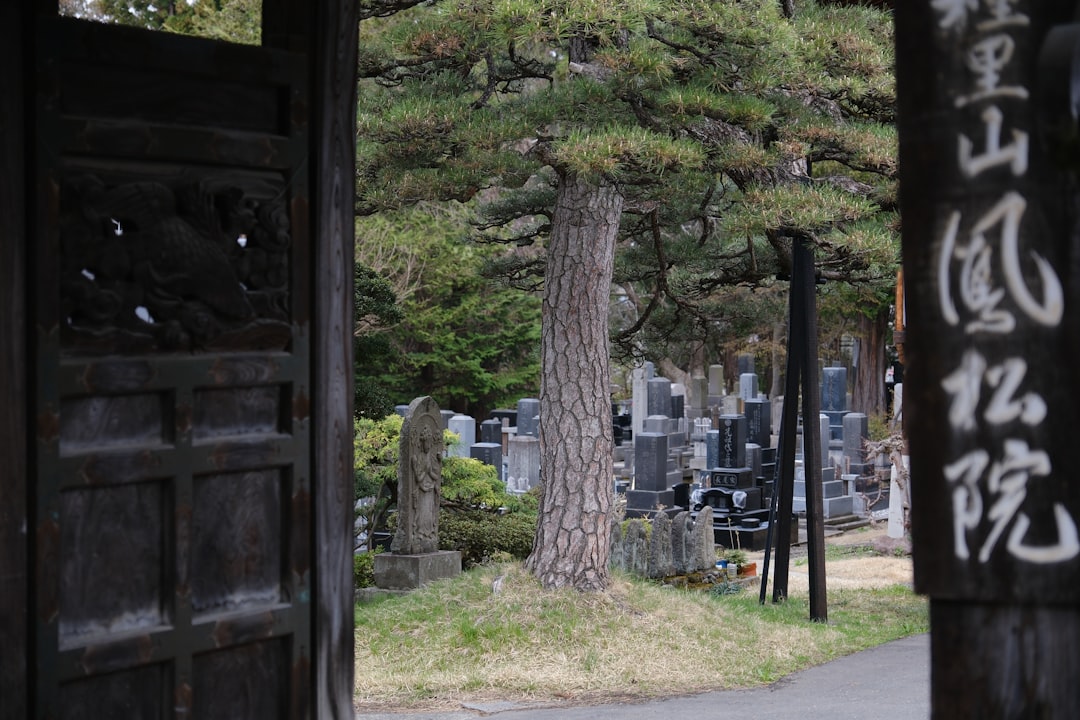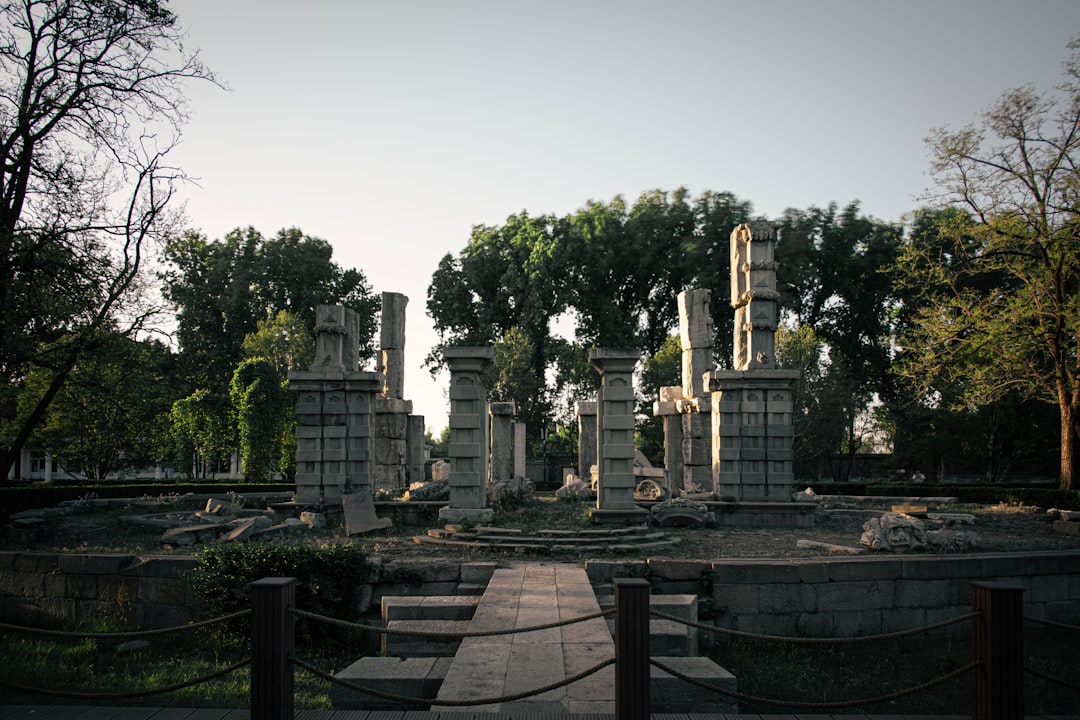

Engage prospects with a scan and streamline customer engagement with FREE QR code marketing tools by Sona – no strings attached!
Create a Free QR CodeFree consultation

No commitment

Engage prospects with a scan and streamline customer engagement with FREE QR code marketing tools by Sona – no strings attached!
Create a Free QR CodeFree consultation

No commitment
QR codes have become a strategic powerhouse in bridging offline engagement with online action. For pet cemeteries, QR codes address a critical challenge: families often want to commemorate pets or access support, but existing offline options are static, hard to track, and inconvenient for emotional moments. QR codes offer a frictionless and surprisingly effective way to amplify pet memorial experiences while capturing actionable engagement data.
They enable grieving pet owners and cemetery operators to create meaningful digital touchpoints for sharing stories, accessing resources, and gathering support, all without requiring complex set-ups or technical know-how. Many traditional memorial processes miss the opportunity to learn from visitor behavior or follow up when interest is high.
This guide explores the most effective ways to deploy QR codes in pet cemeteries for increased conversions, richer visitor experiences, and data-driven decision making. Learn actionable strategies to address lost opportunities, anonymous visitors, and incomplete follow-up so every interaction can have meaningful impact.

Pet cemeteries face a persistent issue: many emotionally meaningful interactions go untracked, and potential conversions happen in fleeting moments that are hard to capture. Families see brochures, contemplate services at memorial markers, or attend commemorative events, yet their intent often fades before a staff member can assist. QR codes solve this conversion gap by turning every physical touchpoint into an immediate, trackable call to action that respects the visitor’s emotional state and time.
By placing QR-enabled invitations at high-intent moments, operators can guide visitors directly to digital memorial pages, counseling resources, appointment scheduling, or donation forms. Each scan becomes a measurable signal, enabling follow-up with compassion and precision. Simple substitutions, such as swapping paper sign-up sheets for QR-linked forms, can increase completion rates, reduce manual errors, and feed clean data into your CRM for informed next steps.
Key strategies:
Beyond these tactics, consider workflow replacements that reduce friction. For example, rather than asking visitors to call the office to book a consultation, a QR code at the front desk can open a scheduling page with availability, confirmation, and reminders. Instead of distributing printed packets for grief resources, use a QR to deliver the latest materials, support groups, and articles that update over time without reprinting.

Traditional cemetery visits often end without a digital connection. Families may want to add a memory, ask about eco-friendly options, or donate in a pet’s name, yet the moment passes. QR codes close this gap by offering immediate, private, and respectful pathways to continue the experience. The visitor can scan when ready, take action in seconds, and remain connected for follow-up support.
This matters because pet cemeteries blend care with service. You need to meet families at emotional moments while also managing a pipeline of inquiries, events, and memorializations. QR codes bring speed and simplicity to these critical touchpoints, reducing friction and enabling better service without pressure or delay.
For common materials like appointment cards, brochures, plot maps, and remembrance wall signage, QR codes inject clarity and speed. An appointment card can include a QR that confirms or reschedules. A brochure can link to a video tour. A plot map can open a search tool for memorial pages. Each touchpoint becomes both useful and measurable.
Not every QR code serves the same purpose. Selecting the right format enhances usability and ensures that each scan leads to a relevant, frictionless experience. In pet cemeteries, formats that streamline support, memorialization, and booking tend to deliver the highest value.
Use formats intentionally and tie each one to a specific outcome. For example, a memorial marker calls for a web link to a tribute page, while a staff business card might use a vCard so contacts save directly without manual typing. Align the format with the context, device habits, and desired action.
Dynamic QR codes are recommended in most cases. They allow destination changes, campaign attribution, and performance tracking without reprinting. Static codes are suitable for permanent memorials with stable URLs, but you will miss flexibility and detailed analytics. With Sona QR, you can generate, manage, and measure every format from a single dashboard.

Growth in pet cemeteries often hides in moments that are meaningful yet unmeasured. Families linger at memorial walls, pick up brochures, or attend events without leaving a digital trace. Embedding QR codes within these touchpoints turns passing interest into a clear next step while preserving the tone of care and respect.
Start by mapping the physical journey: entrance, reception, memorial grounds, reflection areas, and gift shop. Identify where decisions are made, questions arise, and emotions peak. In those exact places, offer a simple, supportive digital option through a QR code with an empathetic CTA.
By systematically instrumenting these touchpoints, you transform the environment into a gentle but effective conversion engine. Even if a visitor is not ready to talk, a scan ensures they can return to their journey later, receive helpful reminders, and remain part of your community.

Use cases should follow the natural flow of a family’s experience: arrival, remembrance, support, and continued community. Each QR should make the next step obvious, effortless, and comforting. The aim is not to push but to guide, while ensuring data is captured for thoughtful follow-up.
Focus on use cases that convert interest into completed actions. Scan behavior reveals readiness, so design destinations that match intent. This improves outcomes such as completed memorials, booked consultations, donations, and event participation.
Each use case benefits from dynamic tracking, enabling you to test CTAs, content, and placement. Over time, patterns emerge, showing which experiences are most meaningful and where more guidance would help.
Every scan is a moment of intent. When you assign unique QR codes to different services, locations, and content types, you automatically segment your audience based on what they care about right now. This segmentation fuels empathetic retargeting via the Sona retargeting playbook and personalized follow-up that respects context.
Pet cemeteries serve multiple journeys: at-need, pre-need, community engagement, and memorial stewardship. QR structures can reflect these journeys. Tag scans by stage, topic, and location to build behavior-based audiences, then align communications with what the scan reveals.
For example, families who scan a memorial marker and then view donation options can receive a gentle thank-you message with information on anniversary commemorations. Visitors who scan an eco-burial brochure can be invited to a short video on sustainable practices followed by a consultation option.
QR codes are the connective tissue between your physical environment and your digital engine. When included across print, signage, events, and social channels, they unify attribution, reduce friction, and let you adapt messaging in real time. This integration is critical for pet cemeteries where many interactions start offline.
Build a simple model: every offline asset gets a QR, every QR uses UTM parameters, and every scan syncs to your CRM. With that foundation, you can evaluate performance, shift resources quickly, and sustain engagement after the visit or event.
When managed through a centralized platform like Sona QR, you can monitor code performance, update destinations without reprinting, and ensure that every scan contributes to a coherent, trackable journey.
Start with a single conversion gap to close. Examples include lost memorial submissions, missed follow-up with support seekers, or low event RSVPs. Define a clear outcome, such as “increase digital memorial completions by 25 percent in three months” or “cut time-to-booking from seven days to three days.”
Map the emotions and questions at the touchpoint. For a reflection area, the best outcome may be access to gentle, self-paced resources. For the reception desk, it may be a fast consult booking. Choose one, set a baseline, and track improvement.
Select the format that best suits your goal and location. Dynamic QR codes are ideal when destinations may change, you need analytics, or you plan to retarget based on behavior. Static codes can be used on permanent memorials if the URL will never change and tracking is not required.
Consider practical details. Outdoor memorials may need higher contrast and durable printing. Indoor brochures can accommodate branded frames and brief explanatory text. Always build with flexibility and measurement in mind.
Design influences scan rates. Ensure adequate size, strong contrast, and an inviting call to action. Include a short line of copy that clarifies the benefit, such as “Scan to add a photo” or “Scan to join a support group.” Use a quiet zone around the code and avoid noisy backgrounds.
Test in real conditions. Scan from various heights, angles, and distances in different lighting. Try multiple devices and camera apps. Confirm that the destination loads quickly, is mobile-friendly, and routes to the correct content. A few minutes of testing saves many missed opportunities.
Roll out the QR in places where intent peaks: entry points, memorial markers, reception desks, reflection areas, event programs, donation stations, and follow-up cards. Each placement can have a unique code so that scans can be traced to context.
Coordinate with staff so they can gently guide visitors to the resource if asked. The goal is to make QR usage feel natural and optional, not intrusive. Keep signage language brief, empathetic, and benefit-oriented.
Connect scan data to outcomes. Use Sona QR to track scans by time, location, and device. Add UTM parameters to every destination so web analytics capture source, medium, and campaign. Sync to your CRM to enrich contacts and trigger follow-up.
Optimize iteratively. Test different CTAs, placements, and landing page layouts. Watch for drop-off points between the scan and the desired action. Adjust content and reminders accordingly. Close the loop by reporting wins back to staff so the team sees the value and continues to improve deployment.
Attribution in pet cemeteries can be elusive because many interactions start on the grounds or at events. Without a mechanism to connect those moments to digital outcomes through Sona offline attribution, you miss critical signals that inform service quality and growth. QR codes, paired with the right analytics stack, give you the clarity to invest wisely and serve compassionately.
Think beyond counting scans. What matters is how those scans influence the journey: did a visitor complete a memorial page, book a consultation, donate, or RSVP? By tracking progress from first scan through to the final outcome, you can justify investments, improve content, and identify which touchpoints need refinement.
When you can connect an on-site action like scanning a memorial plaque to a later event RSVP and a subsequent donation, you gain the insight to refine the journey thoughtfully. Analytics become a tool for care as much as a tool for growth.
Scaling success requires standardization and creativity. Standardize how you build, tag, and track codes. Then experiment with placements and formats that fit your environment. Over time, a cadence of review and iteration will keep the experience fresh, relevant, and effective.
Choose a small set of high-impact tips to operationalize first, then add more as the team gains confidence. Consider a quarterly review session where staff share observations and analytics inform adjustments to CTAs, destinations, and placement.
These practices keep QR experiences aligned with visitor needs while ensuring your team learns and adapts. The result is a program that feels personal and supportive, yet is managed with operational rigor.

Stories from the field show how small changes can deliver significant impact. Pet cemeteries that saw QR codes as a service, not just a technology, were able to connect better with families and measure outcomes without compromising sensitivity.
The common thread is respect for context. Clear, supportive CTAs, thoughtful placements, and short, mobile-friendly experiences turn fleeting moments of interest into lasting connections.
These examples show how QR codes can enrich the memorial experience while giving operators the data needed to serve families more thoughtfully.
QR success blends human empathy with digital precision. The best programs appear effortless to visitors yet are carefully designed by the team. A few best practices can elevate every deployment, while avoiding pitfalls prevents frustration at high-intent moments.
Equip the entire staff with a shared playbook: where to place codes, how to discuss them, and what to do with the data. Pair that with ongoing testing and you will maintain both dignity and effectiveness.
QR codes are emerging as a thoughtful, industry-specific solution to the perennial challenges of lost leads, anonymous visitors, and untracked engagement in pet cemeteries. By converting traditional, static moments into dynamic, interactive experiences, cemeteries can provide comfort to grieving families while benefiting from richer, more actionable marketing intelligence.
Modern QR technology gives operators new visibility into every stage of the visitor journey, enabling instant connections and smart follow-up. When well-executed, these tools help ensure that memorialization, support, and operational excellence are woven together, turning each physical touchpoint into a lasting source of benefit and insight.
To realize these advantages, consider how each memorial, sign, or brochure might be transformed into a simple, yet powerful gateway for both connection and continuous improvement. Approached strategically, these QR code experiences can simultaneously elevate family experiences, uncover new growth opportunities, and renew the sense of community at the heart of every successful pet cemetery.
QR codes have transformed the pet cemetery industry from a purely traditional service into an engaging, personalized experience that drives meaningful connections and conversions. Whether it’s helping families honor their beloved pets with rich digital memorials, simplifying information access, or offering seamless ways to explore services, QR codes turn static markers into interactive touchpoints that deepen customer engagement and loyalty.
Imagine visitors at a pet cemetery instantly accessing heartfelt stories, memorial videos, and service options right from their smartphones—creating a comforting, memorable experience that encourages referrals and repeat business. With Sona QR, you can effortlessly create dynamic, trackable QR codes that update in real time without reprinting, capture valuable data on every scan, and connect these interactions directly to your business growth. No missed opportunities, just more meaningful connections.
Start for free with Sona QR today and transform every scan into a lasting tribute and a powerful driver of your pet cemetery’s success.
Pet cemeteries offer various options including traditional burial plots, eco-friendly or biodegradable urns, and memorial walls with digital tribute capabilities.
QR code memorials placed on plaques or markers link to digital memorial pages where families can share photos, stories, and audio notes, enabling ongoing engagement and support.
Custom durable grave plaques with integrated QR codes for pet cemeteries can be found through specialty providers that offer outdoor-resistant materials designed for interactive memorialization.
While specific costs vary, QR code deployments in pet cemeteries are cost-effective and can reduce expenses by replacing printed materials and manual processes with digital, trackable interactions.
You can create a digital tribute by scanning a QR code on a memorial marker or brochure that directs you to an online memorial page where you can upload photos, add stories, and invite others to contribute.
Use Sona QR's trackable codes to improve customer acquisition and engagement today.
Create Your FREE Trackable QR Code in SecondsJoin results-focused teams combining Sona Platform automation with advanced Google Ads strategies to scale lead generation

Connect your existing CRM

Free Account Enrichment

No setup fees
No commitment required

Free consultation

Get a custom Google Ads roadmap for your business






Launch campaigns that generate qualified leads in 30 days or less.
